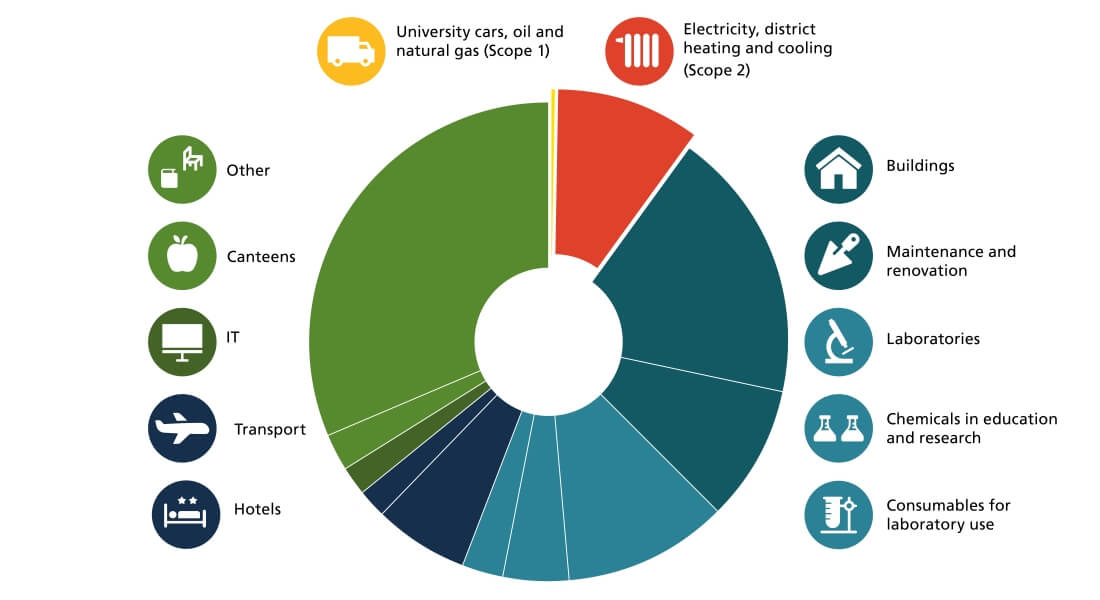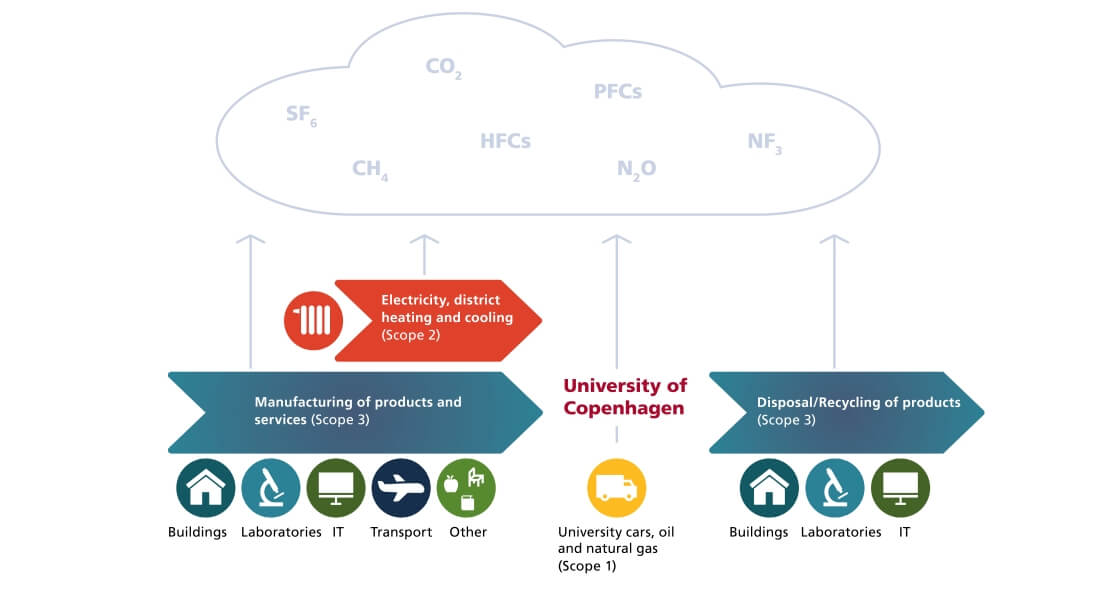UCPH will
- reduce its overall climate footprint per full-time equivalent (FTE) by 50% in 2030.
The Sustainability plan towards 2030 will take responsibility for UCPH's global climate footprint and reduce UCPH's climate impact in a life-cycle and holistic perspective.
This imply that UCPH will make demands concerning how products used at the University are manufactured and how they are disposed of. It further mean an organisational focus on optimisation and reduction of UCPH's consumption of ressources and products
Read more about the life-cycle-based approach below.
With the Green Campus plan UCPH focused on energy efficiency and reduced carbon emissions from energy consumption (Scope 1 and 2) and transport (Scope 3) with 71 % per. FTE. from 2006-2019.
The Green Campus plan and a greater extent of sustainable energy in the energy supply has led to the result that energy consumption accounts for a gradually smaller amount of UCPH's carbon footprint.
UCPH has assessed that the current best basis for an overall estimate is the use of a lifecycle input-output approach. Based on UCPH’s total procurement for 2018, UCPH has made an estimate of UCPH’s total climate footprint and the most important climate action categories.

The estimat reveals that the climate footprint from production and manufacturing of products and services accounts for approx. 85 % of the total climate footprint. Energy Consumption (Scope 1 and 2) accounts for a small amount of the climate footprint (10-15 %). The calculation contains uncertainties, but shows that a number of UCPH’s uses of areas and facilities, products and services account for a remarkable part of UCPH's climate footprint.
A developing method
A lifecycle-based approach comprising all CO2-eq emissions is challenging and methodologically still under development, but it is expected to become more widely used in the future.
In the years to come, rapid methodological development is expected in this field, both nationally and internationally. UCPH will monitor and contribute to the development of knowledge, and adjust its approach and reassess the calculations accordingly.
An organisation's emissions can be divided in three categories (Scope 1, Scope 2 and Scope 3).

Scope 1 concerns direct emissions from fuel, oil and gas. At UCPH this primarily concern emissions from cars, boats and use of city gas in laboratories.
Scope 2 concerns indirect emissions from energy consumption within the organisation. At UCPH this concern emissions from electricity and district heating and cooling.
Scope 3 concerns all other emissions in relation to activities at the university. This can be in relation to manufacturing of products, equipment, maintenance, services etc.





